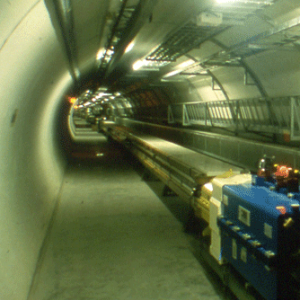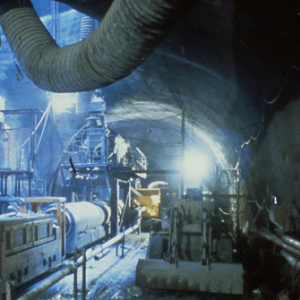Project Highlights
| Sector | industrial plants | |
| Country | Switzerland | |
| Location | C.E.R.N. in Geneva | |
| Type of Contract | E.P.C. | |
| Contract value | EUR 146.2 million | |
| Customer | CERN | |
| Contractor | Group EUROLEP - partecipata Astaldi al 22% | |
| Progress | completed | |
| Construction | from 1983; to: 1988 |



Description
The L.E.P. (Large Electron-Positron Collider) at C.E.R.N. in Geneva was one of the largest particle accelerators ever built worldwide.
A group of companies (including Astaldi) started-up works in 1981 to build a circular tunnel measuring 26.6 km, at a depth of between 51 and 104 metres, in order to allow for experiments to be performed.
The ring was dug using 3 TBMs, shielded cutters that assemble a lining of prefabricated concrete segments measuring 10 centimetres in thickness. The tunnel excavation section comprising the ring has a diameter of 4.5 metres and the finished diameter measures 3.76 metres. 18 shafts were built to access scientific equipment, of a diameter varying from 5 to 23 metres.
The diversity of the geological formations encountered required the use of various technologies in order to build said shafts. A particle accelerator that was even larger than the L.E.P., the L.H.C. (Large Hadron Collider) was put into operation inside the tunnel during 2008.